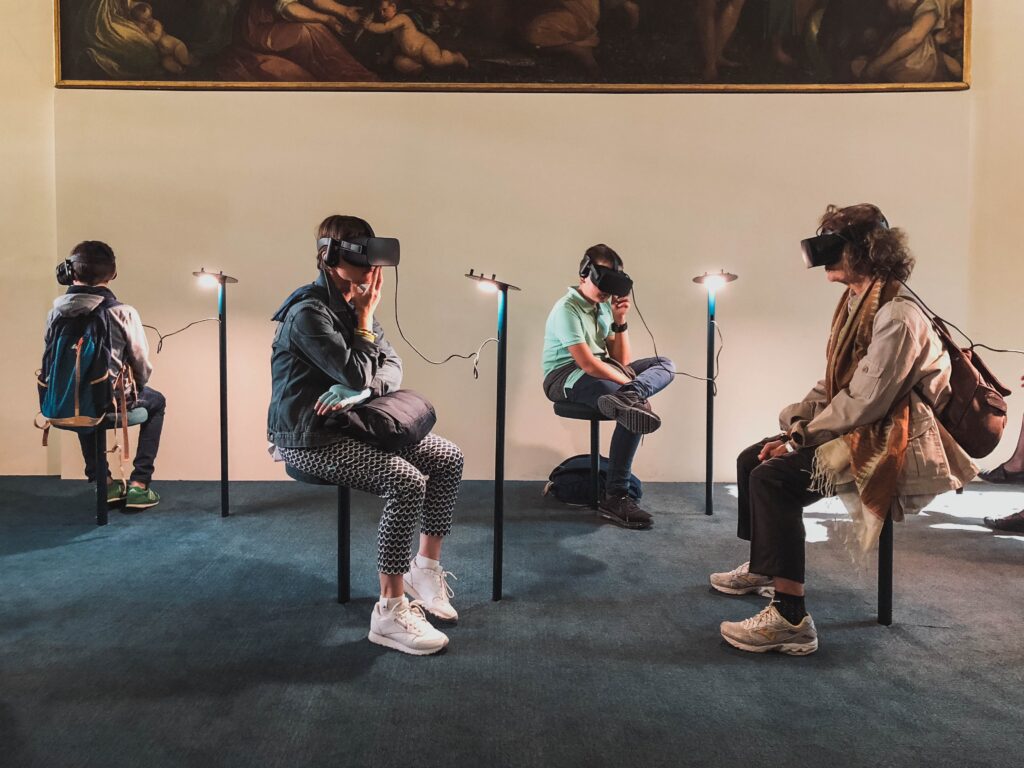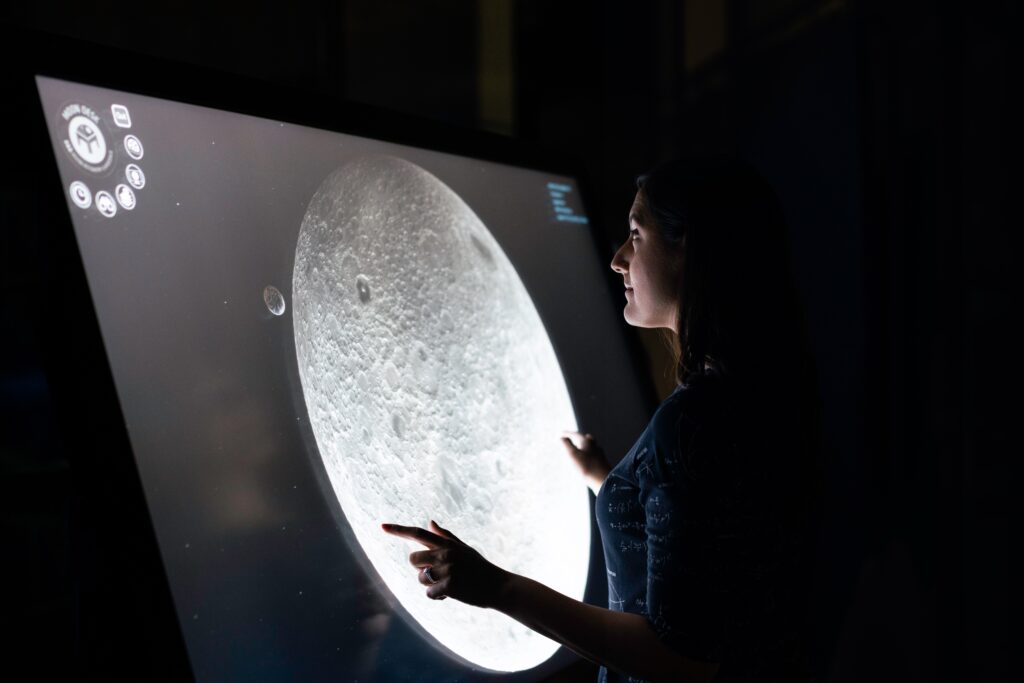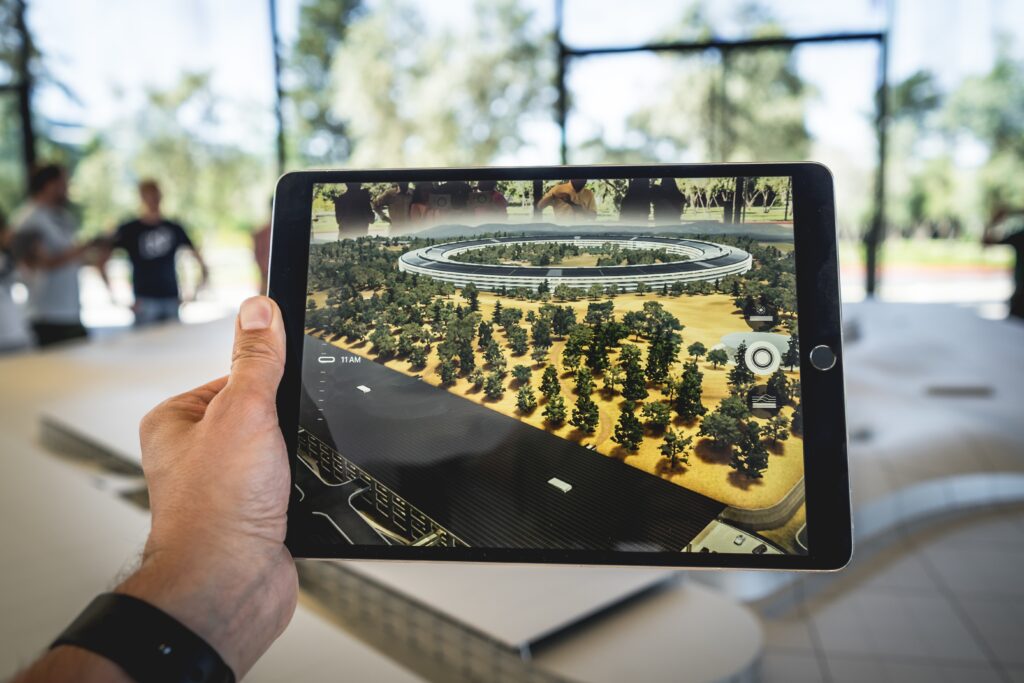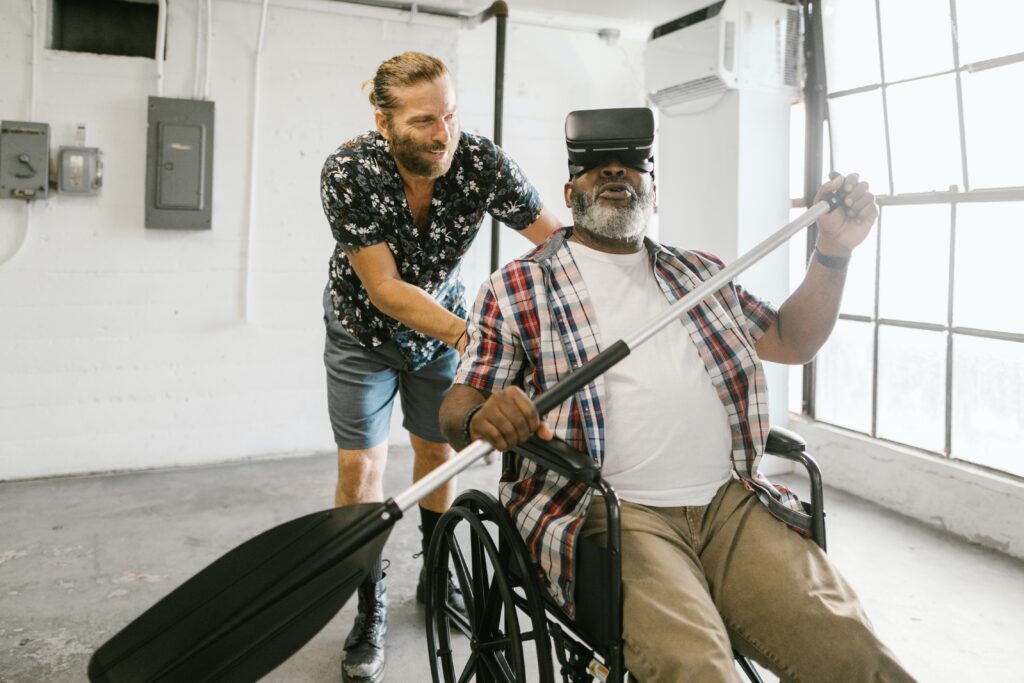Imagine a day when rather than driving to work, you put your virtual reality headset on and meet your colleagues in a virtual work environment. Your plans and projections are run in immersive virtual simulator scenarios using artificial intelligence to identify improvements and reduce waste. And on your lunch break you decide to take a virtual tour of the Louvre or sip coconut water on a virtual beach in Thailand. All without generating travel related CO2 emissions or causing overcrowding and overtourism. Virtual reality has the potential to change how we live, and with sustainable planning, it could even make us more eco-friendly.
What Is Virtual Reality (VR)?
Virtual Reality (VR) refers to an immersive, computer-generated experience designed to provide a realistic environment for the user. The user controls the environment through a headset or googles, gloves and sensors. While the term is an oxymoron in itself, virtual reality is designed to simulate a realistic experience.
We generally think of virtual reality in terms of gaming and entertainment, like the Oculus, but it has applications in healthcare, education, construction and sustainability.
How Much Energy Does Virtual Reality Use?
While virtual reality has many benefits, it’s not a silver bullet to sustainability. Virtual reality needs high speed internet and hardware to work. Both of which require energy and resources. The amount of energy used varies, depending on the type of technology, duration of the session and quality of the graphics and sound. But it’s been estimated that VR can use seven times more power than a regular website experience. Popular gaming VR headsets like the Oculus Rift, HTC VIVE and Playstation VR use between 3–127 watts per hour.
That being said, energy efficiency is doubling every couple of years. And if sustainable methods are used in the design of the virtual reality environment, the amount of energy needed could be significantly reduced.
Current Virtual Reality Market Size
While only an estimated 7-8% of people own a VR headset, the market is set to grow quickly. The VR market was worth 12 billion USD in 2022 and is expected to grow to 22 billion by 2025. A recent survey found that more than 25% of people are interested in virtual experiences like concerts, museums and leisure classes. Generationally, Gen Z and Millennials are the most interested in virtual experiences, with 37-38% expressing interest in virtual activities.
Although there’s a growing interest in virtual reality experiences, the need for hardware and high-speed internet to use the technology is likely to limit growth.
Eco-Friendly Benefits Of Virtual Reality
Like most new technologies today, virtual reality has its downsides in terms of global accessibility and energy usage. But it also offers new ways of living a more sustainable life, from reducing the need for unnecessary travel to saving wasted materials and energy through immersive development project visualisations. Because virtual reality environments are so good at making us think we’re in a real-life scenario, they’re also really effective at helping us empathise with others and understand complex concepts, like the impacts of climate change.

1. Reduces Emissions
No Need For Business Travel
Business travellers make up 12% of airline travellers, flying across the planet for in person business meetings, conferences and events. In the U.S. alone, business travellers take 1.3 million trips daily. In fact, employee travel is one of the most impactful corporate carbon emissions contributors.
But as video conferencing moves to meetings using virtual reality, the need to travel hundreds, or thousands, of kilometres for an in person meeting diminishes. Investing in technology to reduce employee travel can help companies become more sustainable and contribute towards their social responsibility goals.
Vacation From Home
Tourism is responsible for about 8% of global carbon emissions, with air travel topping the list of highest contributors. In addition to emissions caused by travel, overtourism in fragile, heritage sites like Machu Picchu, has damaged the area for generations to come. But what if you could visit these places without leaving the comfort of your own living room? And wander around without being bombarded by crowds of tourists or without leaving any negative impacts on the land? The potential for virtual reality to help make tourism more eco-friendly is huge, it could change the industry entirely.
Theaters Replaced With Immersive Movies
Entertainment-related travel, like going to a movie theatre, is a significant contributor towards greenhouse gas emissions. But experts expect the convenience of watching movies at home on a VR headset to replace the need to leave the house for entertainment, lowering transportation emissions in the process.

2. Increases Education
Abstract concepts, like climate change, can be heard to understand, especially if you don’t have a reference point or haven’t experienced something yourself. But virtual reality offers the chance to experience and learn about something first hand, or at least virtually first hand. Multiple virtual reality experiences have been created to educate on the impact of climate change like The Stanford Ocean Acidification Experience, This is Climate Change and Tree. Users of The Stanford Ocean Acidification Experience, where you see the effects of climate change on the oceans, reported an increase in knowledge about climate change by over 100% after virtually exploring our oceans.

3. Saves Wasted Material
Our global construction industry continues to grow, extracting over 100 billion tonnes of material from the earth every year. The industry creates about a third of the world’s waste, uses a third of the world’s energy and is responsible for almost 40% of the global CO2 emissions.
But virtual reality can help reduce the construction industry’s impact on the environment. Plans can be explored extensively to detect early errors and impacts, reducing energy and material waste.

4. Supports Smart Cities
By 2050, 68% of us will live in a city. So the need to create sustainable, energy efficient cities increases every year. Smart cities around the world already use technology to make their cities more sustainable and energy efficient. Adding virtual reality technology to the Internet of Things (IoT) can improve planning, health care and disaster preparedness.
Singapore, the world’s smartest city, launched its Smart Nation initiative in 2014. Today, they have multiple digital programs running throughout the city including initiatives focused on sustainable living. The city uses smart water meters, dengue survey drones, city apps and smart urban planning. Healthcare is more accessible through tele-health services and online health portals. In the future, virtual reality can enhance areas like healthcare accessibility and effectiveness through virtual therapy and wearable monitoring devices.
Fair Access To Virtual Reality
Virtual reality has the potential to change how we interact with the world. Not only in how we move around and interact with others, but in how we understand and learn about complex concepts. But maybe only for a privileged few. If your awareness of virtual reality comes from gaming consoles or amusement park rides, you’re probably in the privileged group.
Virtual reality technology requires high-speed internet. But as of 2019, 3.6 billion people, 47% of the world’s population, don’t have access to the internet. Most of the unconnected world are disproportionately in the 47 Least Developed Countries, where more than 80% of the population don’t have internet access. For virtual reality technologies to benefit everyone, we first need to get everyone connected to high-speed internet. Advancements in technology will only benefit those that are set up for it and without an established internet network, the divide between the most developed and least developed countries will only increase.
Sustayn is designed to present the most useful recommendations for environmentally friendly approaches and items. We update links when possible, but note that links can be broken and subject to change.








